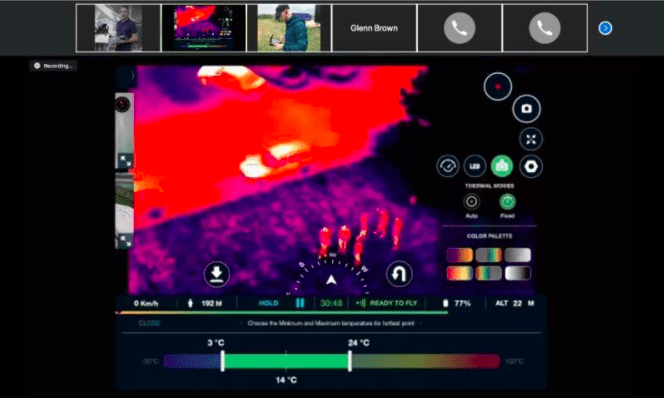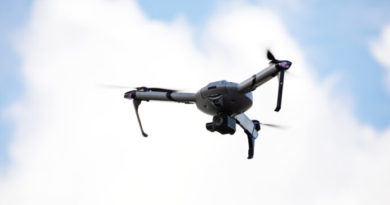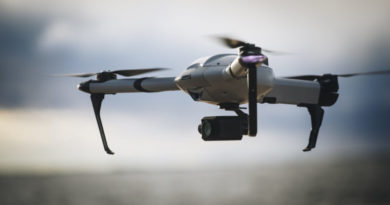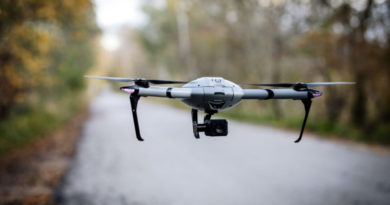What the UAS Industry Can Learn from COVID–19
![]()
The world was flipped on its head this year when an unthinkable pandemic struck every corner of the globe. The unmanned industry, like nearly every sector, suffered from the economic and operational effects of the social distancing and a global shutdown. But like in many innovative industries, some UAS companies quickly adapted to the new situation and succeeded in turning the situation around and leverage it. These companies were swift to develop new solutions that push the industry forward and will become the standard operating methodology long after the pandemic is gone.
There’s no doubt that social distancing created a huge challenge to unmanned industry’s companies. Our global industry depends heavily on conferences and live demos to showcase new innovations in aerial and ground systems. With all major events cancelled and travel suspended, adapting to the new normal was the only way forward.
In response, we quickly developed new ways to showcase, sell and train new customers online and in real time. This adjustment was necessary both to keep growing, but also to set a new standard that customers came to expect amid the pandemic. Here are a few ways the industry evolved and adapted with COVID-19:
Remote Training Methods
The process for marketing and live demonstrations changed completely, almost overnight. I’m not only referring to new websites with more insights and information on exciting products; the most important change came into play as companies initiated a new way to personalize the experience for prospective customers—offering real-time demonstrations online. These included different clients participating from different corners of the world, and enabling them to both see capabilities as well as facilitate remote operation from thousands of miles away. The process was carefully orchestrated to offer as similar as possible an experience and generate confidence that was previously offered in person. The remote demonstration concept was also translated into remote training, with drones being shipped to the customer, and training done upon their arrival with instructor online. The remote communication with new and existing users created a new standard of onboarding clients, and this concept will serve as a core initial pillar of the sale cycle as we move forward.
Evolving Expectations and Regulations
Throughout the pandemic, companies have been getting approached for current solutions that fit with pandemic-like situations. These include use cases for autonomous or remote operation and Beyond Visual Line of Sight (BVLOS) missions. These concepts of operations (CONOPS) are gaining more attention from customers, and as a result, regulators are also becoming more open to BVLOS operations. We saw this widespread acceptance take place as drones provided critical medical delivery services in North America and Germany. This is a positive sign for the future of the UAS industry, as the it showcases how valuable some of its previously controversial features are to the general public.
New Features
As global companies continue to evolve amid the pandemic, UAS leaders are also being approached by customers to add features, especially new payloads that fit with changing COVID–19 expectations. These include loudspeakers, flashlights, such as the one that were used in Australia by the authorities to deliver public service announcements related to the coronavirus, and additional different sensors for ad-hoc scenarios. Likewise, several customers are now realizing the benefits of services that were already offered including remote operation for EVLOS/BVOLS scenarios. These growing needs that are raised from the user side, especially in the field of new sensors, are a great milestone for the UAS industry that represent maturity and understanding of what the flying platform can offer. As a result, UAS companies will continue to mature in order to meet growing user needs.
The Future of the UAS Industry
While the past few months have been challenging, the lessons we’ve learned across the industry will stay with us for years to come.
The “autonomous future” is already a reality—it’s happening now and is starting to generate the “promise of the drone” – the value of an self-sufficient sensor that provide valuable data in a fast, efficient and safe manner, for both companies and the end-user. The COVID-19 pandemic was the impetus for unleashing these capabilities in a larger scale.
User centric design is ever more important – When designing an autonomous solution for a social distancing scenario, user-centric design becomes key as we can’t meet the user. We need to be able to continually talk with our users and learn from them, to consistently stay informed on their needs and pain points in their unique context, and to provide forward-thinking solutions. This approach requires high-touch and long-lasting relationships that enabling design solutions according to clients’ current and future needs.
Simple operation is the only way- Operation simplicity will become a key part of our industry’s future. The era in which you need to be a “pilot” in order to operate an UAS is coming to an end. Operating a drone or setting an autonomous mission should be simple, in a way that you can explain it online and the user can learn with ease, virtually and in real-time, and that will translate to easy operation in the field by many more operators.
The past few months have taught us that remote work is not just a burden but can create significant benefits. At first, remote work was adapted out of necessity, but we’ve soon learned that it’s possible to thrive in the UAS business from anywhere in the globe and grow ever faster as a result. While nothing can replace the appeal of a live demo and it’s most optimal to train users in person, we’ve learned that remote operation has its benefits and is here to stay in our global industry.
These insights regarding COVID related industry acceleration toward greater automation and the importance of user centric design, simplicity and leveraging opportunities of remote work will change the industry for the better and will accelerate its offerings as the consensual CONOPS.



